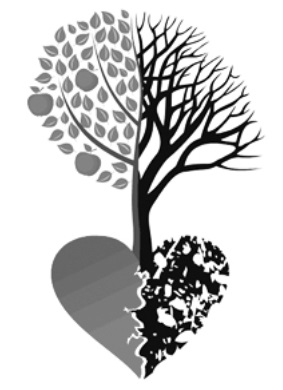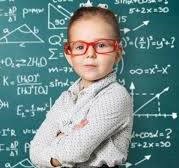
BY JOSEPH SOBOKA
Love is kind feeling. It is a situation when people show thoughtfulness and sympathy. Love is a situation in which someone expresses concern about somebody else and shares feelings.
Love encompasses a range of strong and positive emotional and mental states, from the most sublime virtue or good habit, the deepest interpersonal affection, to the simplest pleasure. In love, positive strength, together with goodness and excellence, rules. No wonder why millions are captivated by it and ever remain subject to it. Emotional chord of love tightly and inseparably binds together humans regardless of power, gender or social status. As long as it is true love, no power in the world can break it easily. It has the power to subdue even heroes to surrender.
Greater feelings of love, for instance, involving romantic partners is associated with the absence of betrayal. Greater hate is induced in the presence of betrayal. People who share similar values and interests with the target persons are more likely to experience stronger love. The shackle of love irrevocably binds together in this manner. What’s to be understood is as much as love closely draws people to each other, hate has the power to drifts them apart. This happens after the relationship is broken. Stronger feelings of love are associated with greater hate.
If one loves someone deeply and sometimes hates that person, the feeling of love may still be dominant. No matter what, once a person is shackled by love, the possibility of his separation from his or her love object is quite remote. The relationship between romantic love and hate is revealed to be more complex than expected. Suppose a man truly loves a woman, his feeling for her should not be conditional. In addition, feelings of love are influenced by similarity. Thus individuals experience feelings of love, felt stronger love toward someone of the opposite sex who was similar to them. This view has also been supported by research looking at mate preferences. It is believed that lovers perceive greater love for the one who is more similar to themselves. In this respect, individuals who are similar to each other easily form good impressions of each other within a short time. However, there is little direct evidence on whether the similarity of the two individuals has a crucial role in the development of a romantic relationship.
The write believes that similarity plays a vital role in attraction, regardless of situations involving “love at first sight” or impressions based on long-term exchanges.
Therefore, love and hate are indeed related. Hate is an imitation of love and also a type of relationship with others and oneself. That is, in managing their relationships with others, people are at the same time managing themselves.
In the context of an individual’s love and hate, when the relationship one has developed with a particular partner is destroyed, the romantic love consequently turned into hate. Especially from the perspectives of young couples in romantic relationships, hate is also a reflection of love. The writer is not sure whether the of act beating a wife is universal as it is believed to be so in Ethiopia. The idea is that the dulled affection is sharpened quite after the beating and the romantic relationship gets heightened. Thus, the relationship between love and hate can be explained from different perspectives. Romantic hate may be rooted in romantic jealousy. Neither of the partners likes his or her lover to be taken away by another person. This is true of relationship apart from the romantic one – casual friendship.
Coupled with this, emotional jealousy and cognitive jealousy as constituents of romantic jealousy. Emotional jealousy reflects the anger and fear of the individual in love, while cognitive jealousy mainly relates to the individual’s negative attitude to lovers.
Therefore, we speculate that it is a lover’s betrayal that causes anger and other negative emotions, resulting in hate. Moreover, cognitive jealousy is directly related to relationship dissatisfaction between lovers. The more one loves a person, the more sensitive one becomes when encountering threats to the relationship. In this respect, individuals experience more love and more hatred toward the same lover. The conclusion is that the deeper the love, the deeper the hate.
Equity plays pivotal role in love; the intensity of emotional input one makes determines the type of the relationship, be it love or hate. Equity is calculated from both the individual’s inputs and the resulting outcomes. Thus, in our context, the more one loves a person, the more psychological investment one makes.
However, when there is an imbalance between the individual’s inputs and outcomes, the perception of equity is lost, thus, resulting in a change of perception between hate and love. If, initially, the individual loved the target the most, the degree of love is still higher than that of hate after the negative event. However, when the individual did not love the target as much initially, the degree of love would be markedly lower than that of hate. These illustrate the complexity associated with romantic love and hate.
People have different emotional reactions toward different target persons in the context of romantic love and hate. For the person whom one loves the most or even hates, love may still be dominant in the context of betrayal. This hate is a reflection of love and a feeling of sorrow. However, for the person one does not love, feelings of hate are stronger than those of love. This hate perhaps has its roots in the moral dimension, which mainly concern social judgments about the quality of a person. This is why people experience such pain upon betrayal in a romantic relationship.
In the social context, individuals who look at a relationship as “all good” or “all bad” have lower self-esteem compared to others. These individuals also have long-term concerns about whether their friends are willing to accept them in a closed relationship. the writer offers this as the reason behind love and hate, and that this phenomenon could be observed in any relationship. Needless to say, the complex precursors of love and hate can be interpreted in many ways. Perhaps as some of the most ubiquitous emotions, people need to comprehend and explain love and hate objectively and rationally. Although we study the nature of love and hate from a rational point of view and from an emotional perspective to explain the precursors of these two basic emotions, humans are emotional beings. If we pay close attention to hate, we can better understand love.
As a conclusion, the deeper the love, the deeper the hate, and suggested similarity as a crucial factor influencing feelings of love and hate. In addition, people have different emotional reactions toward different people in the context of romantic love and hate and other situations, it could be a country. For the person whom one loves or hates the most, love may still be dominant in the context of betrayal. However, for the person one does not love, feelings of hatred are stronger than those of love. The relationship between romantic love and hate, and highlighted the important role of similarity in moderating the relationship between love and hate.
Such is the intricacies of love and its shackles that deny the subjects trapped by it easy way out once they are in it.
THE ETHIOPIAN HERALD JULY 1/2021





